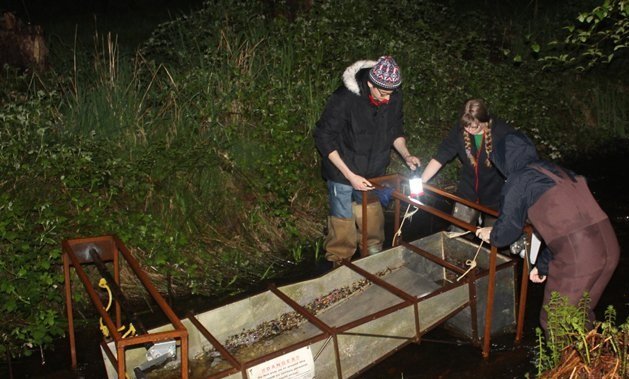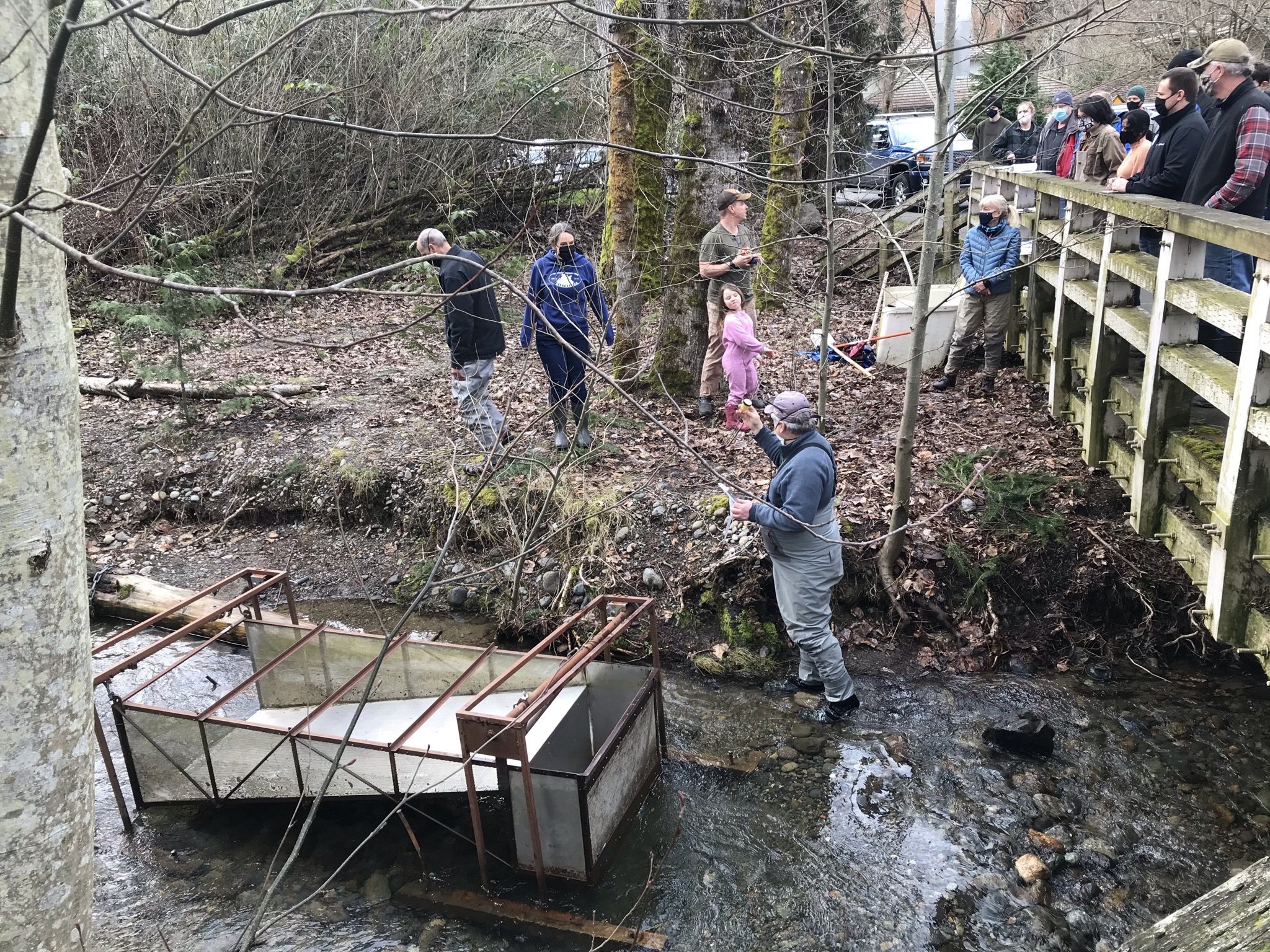
KOKANEE FRY TRAPPING
Kokanee are a native Pacific Northwest salmon closely related to sockeye that live only in freshwater. Historically the predominant salmon species in Lake Sammamish, today the population is in decline. Since 2008, Three Rivers Trout Unlimited has supported recovery efforts by coordinating a community science program to collect data for population monitoring. Every year volunteers donate around 1,000 hours to trap and count fry four nights a week as they migrate from spawning streams for use in a model to determine the productivity of the previous spawning return.
Volunteer
Contact: Wayne Lamm, wayne@threeriverstu.org.
Review the volunteer information on this page, including available shifts, and email Wayne to get started.
When: Late February to mid-May on Monday, Tuesday, Thursday, and Saturday evening. Kokanee fry migrate at night, so shift start times start near dusk and start later as days get longer.
Where: Near the outlets of Ebright (Sammamish) and Lewis (Issaquah) creeks around Lake Sammamish.
Time Commitment:
Registration (15 minutes)
Volunteers must provide contact information and sign a waiver to participate. Youth must be accompanied by an adult to volunteer. Registration is completed via email.Training (0.5 to 1 hour)
Volunteers must review the Kokanee Fry Trapping Protocol and Species Identification Guide sent during the registration process. We strongly encourage volunteers to attend in-person training on the Saturday when traps are installed as well, however, most training is on-the-job and new volunteers are paired with experienced volunteers.1+ Volunteer Shifts (3.5 to 4 hours)
Each shift includes three one-hour-long trapping sessions. Shift length depends on stream conditions that may impact trap set-up and take-down time, and the number of fish caught as it takes longer to count more fish.

